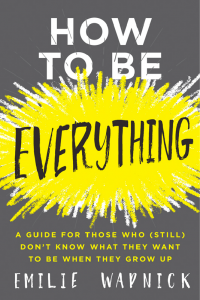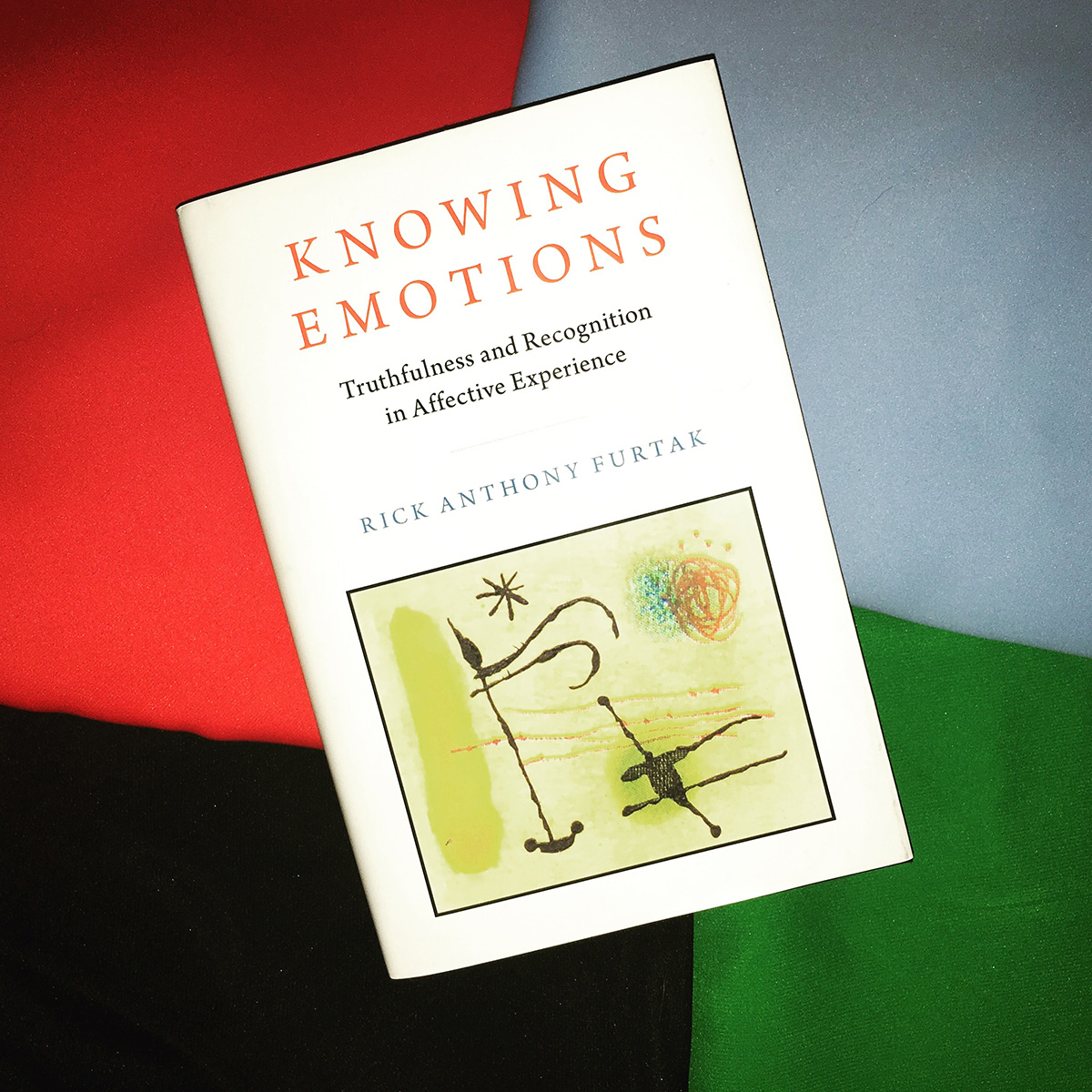"What I love about compassion, what makes it so cool, is that when you give back to others, the person who benefits the most is actually you."—Parneet Pal, in our interview about her work at Wisdom Labs.
Why Be Something When You Can Be Everything? A review of How to Be Everything by Emilie Wapnick
In 2015, Emilie Wapnick appeared on the TEDxBend stage for her talk “Why some of us don’t have one true calling,” and recounted, in a gawky, self-consciously eager manner, her pattern of serially switching from one interest to the next—from English to math to art to music. She described her cycle of intense interest followed by quick boredom, together with her fear that this may mean she’d never find a career, and, even worse, that it demonstrated a kind of character flaw. Put in this situation, she reflects, you may feel alone and without purpose, asking what’s wrong with you. “There’s nothing wrong with you,” she asserts with sudden confidence. “What you are is a multipotentialite.” The audience erupts in knowing laughter and applause.
Wapnick went on to write a book, How to Be Everything: A Guide for Those Who (Still) Don’t Know What They Want to Be When They Grow Up, first released in 2017 and now out as a paperback, which sets out the lay of the land for her idea. In it, she focuses on how to shape not a multipotentialite career per se, but a way of life that leans into innate tendencies, rather than trying to shapeshift to fit the common frame. This goes beyond merely accepting and embracing your inner wiring, she writes, but “to build a sustainable life around your plurality.” The resulting book is therefore part manifesto, part self-help, part career counseling, and part time management.
 The phenomenon she describes isn’t really new or entirely original—think for example of the terms “Renaissance man” or “polymath,” both of which are commonly understood concepts though maybe not commonly occurring—but what she does describe anew are the particular difficulties of pursuing such a thing in the modern day. Today’s work environment is set amidst large amounts of social freedom, unpredictable employment, relative societal prosperity, crushing personal debt, the gig economy, and, because human longevity continues to increase, a longer than ever before working life. For multipotentialites—and I include myself in the group, if not the nomenclature—the simple introduction of a name can be a welcome salve. Putting a word to something gives it validity and communicability, and makes it more easily handled.
The phenomenon she describes isn’t really new or entirely original—think for example of the terms “Renaissance man” or “polymath,” both of which are commonly understood concepts though maybe not commonly occurring—but what she does describe anew are the particular difficulties of pursuing such a thing in the modern day. Today’s work environment is set amidst large amounts of social freedom, unpredictable employment, relative societal prosperity, crushing personal debt, the gig economy, and, because human longevity continues to increase, a longer than ever before working life. For multipotentialites—and I include myself in the group, if not the nomenclature—the simple introduction of a name can be a welcome salve. Putting a word to something gives it validity and communicability, and makes it more easily handled.
The author recounts a story in which she presented a project during university, and a professor commented on the “weirdness” of it, but emphasized: “Don’t hide that weirdness; feature it.” Wapnick explains how that moment gave her permission to feature the things that make her unique. And, as basic and banal as this is, it’s something that, for whatever reason, most of us need to be reminded about again and again. It’s all too common to wait for permission to do the things we want to do, even to be the person we feel that we are. Without even being aware, we’re waiting for the nod, the tip of the hat, the “ahhh, I get it,” from somebody else, to know when we’ve struck gold.
I think the reason her idea has had such resonance is that society demands that we are something; that is, to be a word-shaped thing. To seek something outside of a word is to be unknown and therefore dangerous. Yet, exactly for this reason, we humans end up spending some, if not all, of our lives in this ambiguous push-and-pull of linguistic pointing, seeking to escape certain words and seeking to attach to others. It’s the foundation of identity.
Through her platform Puttylike, Wapnik built a community of multipotentialites, and her interviews with the people there are the basis of her book. To be sure, it’s anecdotal rather than data-driven, and many of the truths that she arrives at—“Multipotentialites need a sense of meaning in our lives to be happy.”—are so universal that it’s downright awkward and clumsy to pretend that they’re peculiar to her community. But, taken in an exploratory context, and with a generous spirit, one gets a sense for the general shape and spirit of the multipotentialite: curious, creative, adaptable bridge-builders.
For those who are still struggling to recognize their multipotentialite nature, How to Be Everything is a wonderful first step, both grounded and practical. She names five “superpowers” of the multipotentialite, which can be harnessed and honed, and describes four work models that can serve as a guide for career planning. The language is often cringeworthily childlike (see “Rapid learning is awesome” or “Being a multipotentialite is wonderful, and embracing your many passions rocks!”) but, if you can get past that, again, with a friendly mindset, it’s plain to see that Wapnik’s efforts come from a place of wanting to help people make their weird lives work for them.
Where this book really succeeds is in encouraging people who tend toward scanning, flitting and generalism to know, and then embrace, their nature. Since so much of the modern workplace is based around a factory mindset—set hours, prescriptive job titles, and limited tasks—many of us find ourselves stifling parts of ourselves in order to fit the mold. In particular, it can be difficult to conceive of a career or a way of life that you’ve never before seen in action, or for which you have no role models. By sharing some of the different ways of making a multipotentialite career and life, based on the people of her community, Wapnik lays down firm foundation for possibilities that may otherwise seem to be ethereal, if not outright fantastic.
How to Be Everything (2017) is published by HarperOne.



